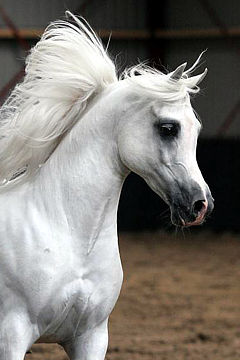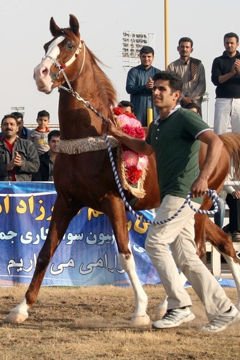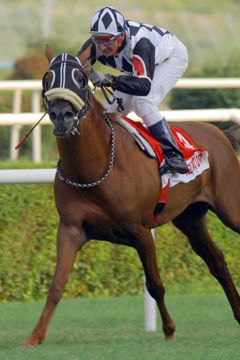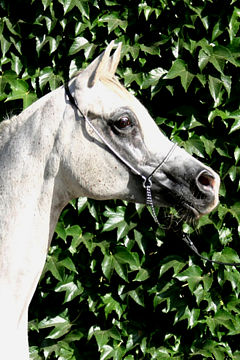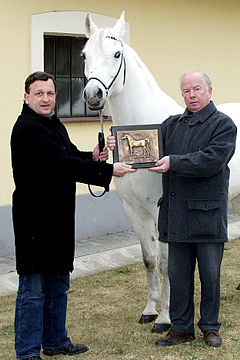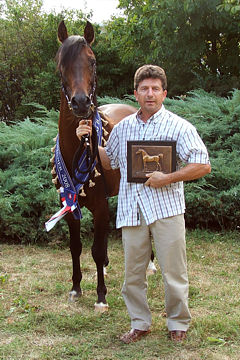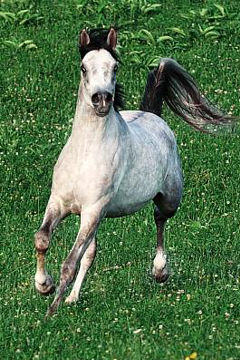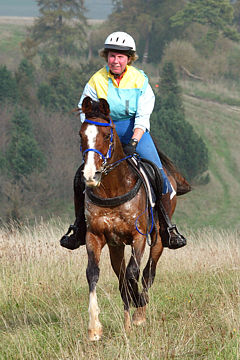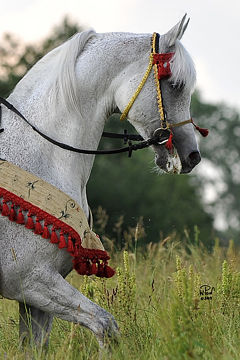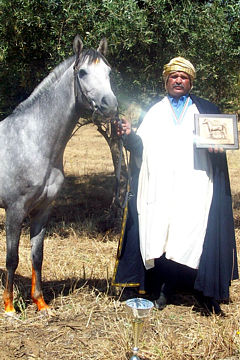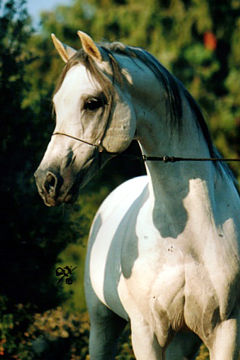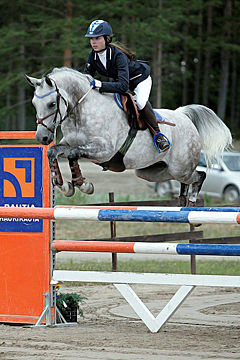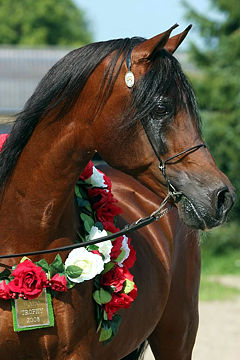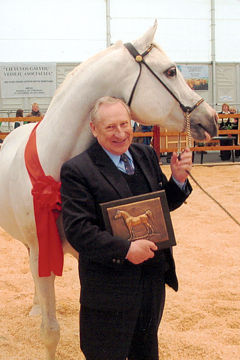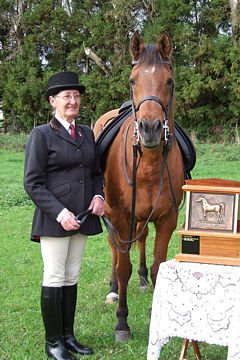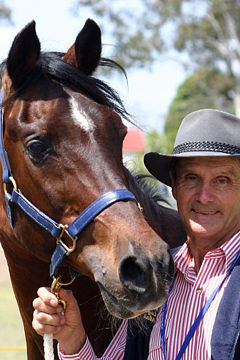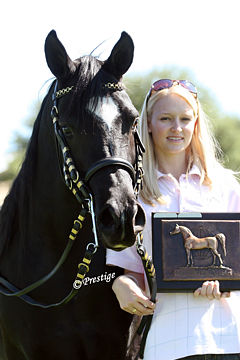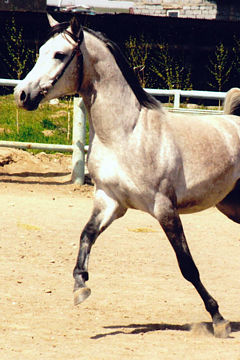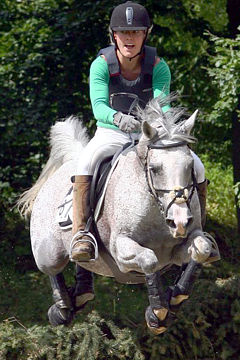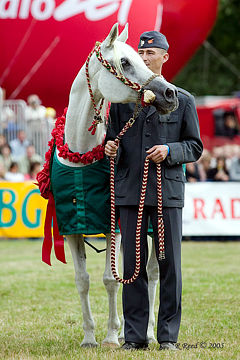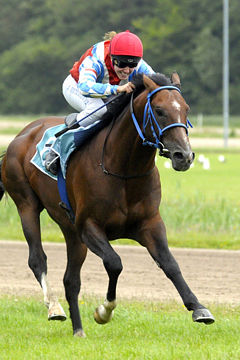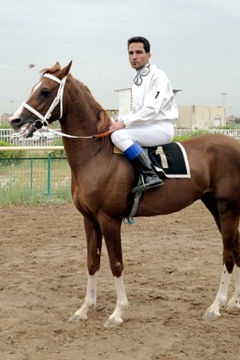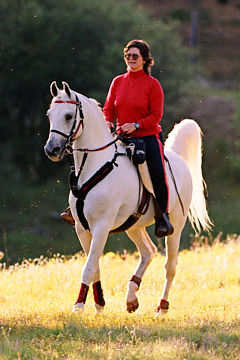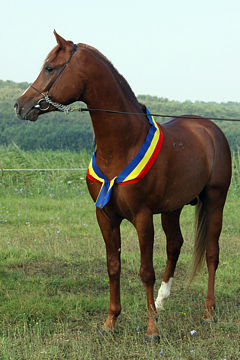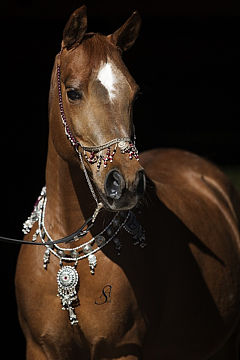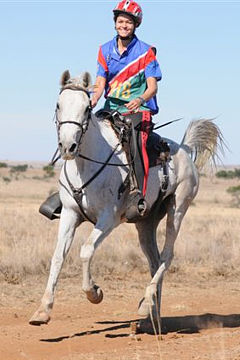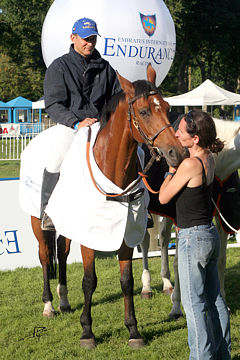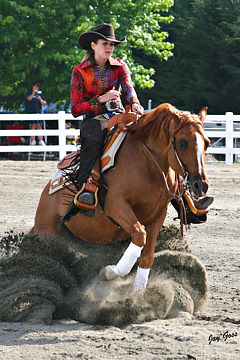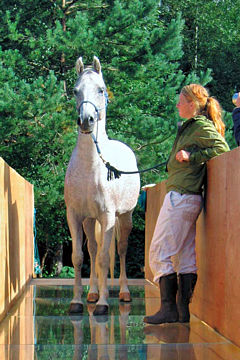GENETIC DISORDERS AND TESTS AVAILABLE IN ARABIAN HORSES
This article is also available in French (click here) Spanish (click here) and German (Click here)
TO PREVENT AFFECTED FOALS, TEST BEFORE YOU BREED
GENERAL INTRODUCTION: Genetically inherited traits including those that are fatal or disabling can be found in humans and in all breeds of animals including the horse. Fortunately, a few Universities around the world have for many years been continuing their research in order to create gene tests to identify carriers of the various inherited equine genetic disorders, not only those found in Arabians.
The Equine Genome Project was first completed in 2007 and regularly updated since then. A full “map” of the horse’s genes is now available to researchers worldwide and has dramatically advanced equine genetic research in many areas. Horses share over 90 hereditary diseases similar to those found in humans, so the sequencing of the horse genome has potential applications to both equine and human health. Universities also hold vast databanks of equine DNA, much of it from registered and parent-verified horses of many breeds, with known pedigrees going back generations. These databanks hold the key to current and future equine gene test research, as it is only through the collection of large numbers of samples that the location of the mutant alleles can be established and genetic carrier tests developed. Already, more than 237 equine traits or disorders with a genetic basis have been catalogued, and tests are available for many of these, ranging from coat colour to genetic disorders. Arabians are not the only breed of horse to have problems with inherited disorders, however, some genetic disorders are breed specific and in this article we will be looking only at the most serious genetic disorders which are known to affect Arabian horses.
The research to identify the specific genes which cause these disorders is extremely time consuming and expensive, especially when it is into the relatively rare conditions such as Lavender Foal Syndrome. Many individuals and institutions involved with Arabian horses have supported this research in many countries over the years, both by submitting samples from their horses and with financial donations – their generosity is outstanding and is to be commended. As a direct result, tests for Severe Combined Immunodeficiency Disorder (SCID), Cerebellar Abiotrophy (CA), Lavender Foal Syndrome (LFS), and for one form of Occipital Atlanto-Axial Malformation (OAAM1) are now available. WAHO applauds the efforts of the all the scientists and researchers, past and present, and all the sponsors and individuals who have been contributed to this vital work for many decades.
Research is ongoing but tests do not yet exist for other known disorders such as JIS (Juvenile Idiopathic Epilepsy) and GPT (Guttural Pouch Tympany) and is also currently being conducted into conditions which also affect other breeds, such as Equine Metabolic Syndrome.
At the time of writing this article (September 2020), the four main conditions affecting Arabian horses which have available genetic tests are:
- Severe Combined Immunodeficiency Disorder (SCID)
- Cerebellar Abiotrophy (CA)
- Lavender Foal Syndrome (LFS)
- Occipital Atlanto-Axial Malformation (OAAM1)
It is important to understand that these conditions, which unfortunately usually result in death or euthanasia of the affected foal, are autosomal recessives. Autosomal recessive traits are found in many mammal species. “Autosomal” means the trait is not sex linked, and “recessive” means that in order for a foal to be affected, it must have 2 copies of the mutated allele, receiving one copy from each parent. Horses with 1 copy are carriers but are completely free of clinical signs and do not have any negative consequences to their health or performance. It is only when two carriers are bred together than an affected foal can be produced.
It is to everyone’s benefit to become more informed about the genetic disorders in our Arabian horses, to support the researchers in their work and whenever possible to take the necessary steps to selectively avoid the production of affected foals. Responsible owners are now regularly using the available genetic tests when planning breedings, so that carriers are not bred to carriers, along with all the many other considerations that go into making such breeding decisions. Carrier horses may be safely bred to clear horses, thus retaining desirable traits and preferred pedigree crosses. In this way affected foals, with all the attendant heart-break that this causes to their breeders, will not be produced.
WAHO very strongly supports the concept of voluntary testing and disclosure of Arabian horses and encourages all Member Registries to do their utmost to educate, encourage and support their owners and breeders to do so. There are now several laboratories worldwide offering gene testing for SCID, LFS, CA and OAAM1. Many WAHO Member Registries can advise their members and owners of their nearest recognized laboratory.
It is important to understand that inherited genetic disorders in Arabian horses know no boundaries. They have been reported in all blood lines of the Arabian breed and reported cases have come from almost all countries where Arabians are being bred today. It is also important to understand that there is nothing to be gained from “pedigree witch-hunts”. Through science, we can all learn to deal with facts as they are today, and not to “point fingers” at individual horses from the past which may or may not have been the original sources of these genetic disorders. It also has to be said that it may not be possible or wise to eliminate a genetic disorder altogether, because by doing so an unwanted side effect might be to also eliminate other beneficial traits and diminish, rather than enhance, the gene pool.
DETAILS ON THE GENETIC DISORDERS IN THE ARABIAN BREED:
- SEVERE COMBINED IMMUNODEFICIENCY DISORDER (SCID).
Severe Combined Immunodeficiency (SCID) is an inherited autosomal recessive genetic lethal condition which was at one time responsible for the death of a significant number of Arabian foals before the age of 6 months. SCID was first reported in Arabian foals in 1973 by McGuire and Poppie, Australia. In 1980, Perryman and Torbeck in the USA showed that SCID in Arabian horses was inherited as an autosomal recessive condition. After many decades of expensive and time-consuming research, the good news is that for over 20 years there has been a DNA test available for the SCID found in Arabian horses, which was developed and patented by VetGen Laboratories in America. This test can detect whether a horse is clear of the SCID gene, is a carrier of SCID gene, or is an affected foal which has inherited the gene from both parents. The test is now widely available, under licence to VetGen, in many laboratories worldwide.
A foal affected by SCID is born with a severely impaired immune system, they have a complete absence of B and T lymphocytes (Perryman, 2004) and lack serum immunoglobin. B and T cells, also known as killer cells, are responsible for destroying viral-affected cells in the body. As affected individuals are unable to produce antigen-specific immune responses they are at risk of infectious diseases and their ability to recover from illnesses and infections is severely compromised. Affected foals generally die of an opportunistic infection such as pneumonia, usually before the age of five or six months. Breeders who suspect SCID can have the foal or both parents gene tested, and if positive may opt for early euthanasia of an affected foal to prevent further suffering.
Since testing has been available, studies on the prevalence of SCID have been carried out in many countries which show that the percentage of SCID carriers and affected foals is definitely reducing, which clearly demonstrates the power and importance of testing breeding stock.
Since SCID is an autosomal recessive disease, matings between two clear animals as well as matings between a clear and a carrier animal will never produce an affected animal.
For more information, please visit the VetGen website:
https://www.vetgen.com/equine-scid-service.html
CEREBELLAR ABIOTROPHY (CA)
Also referred to as Cerebellar Cortical Abiotrophy (CCA), this is a neurological disease found in Arabians and some other breeds with Arabian antecedents. Although not lethal in the same way as the other 3 conditions discussed here, most affected horses are euthanized before adulthood because they are so accident-prone as to be a danger to themselves and others.
CA affects the neurons known as Purkinje cells in the cerebellum of the brain, causing them to die off. Put simply, without Purkinje cells, an animal loses its sense of space and distance, making balance and coordination difficult. In most cases, the neurons begin to die off shortly after the animal is born and the condition is noticeable when the animal is less than six months old, though sometimes the onset of symptoms is gradual and the animal is much older before the owner notices a problem. Cerebellar Abiotrophy is different from Cerebellar Hyperplasia.
Foals affected with CA appear normal at birth. Around six weeks of age (although sometimes as late as four months), the disease causes the death of neurons in the cerebellum of affected foals, leading to head tremor (intention tremor) and a lack of balance equilibrium (ataxia), among other neurological deficits. Affected horses may show exaggerated action of the forelegs, a wide-based stance, and be unable to rise from a reclining position. They tend to startle easily and often fall due to ataxia. The neurological problems in young foals may not be apparent to owners and are frequently thought to be a consequence of a fall rather than CA.
The following notable symptoms may be observed: A palsy-like head shaking called “intention tremors” affecting only the head and not the neck or body, particularly noticeable when the foal is trying to focus on something; the lack of a normal blink response although vision is correct; and a lack of balance (ataxia). They have an awkward exaggerated form of action with the forelimbs called “hyper-metric action” similar to a military goose-step or high elevation used to cross over a very low object. Sometimes in a badly affected individual it appears that the hind legs are also affected, but not usually. This hyper-metric action involves a shooting out and up of the foreleg directly from the elbow at both the walk and the trot. The hoof is brought down to the ground with a thump, often heel first. When cantering on level ground the horse looks as if it is cantering uphill, like a butterfly stroke in swimming. It is a highly exaggerated gait. The more stressed the horse, the more exaggerated the gait. Their spinal column is not involved; they do not lose weight; they are not in pain; they are neither lethargic nor show signs of increasing weakness, or loss of muscle tone.
As many affected foals will often run into things or fall down, sometimes causing head injuries, their condition can be misdiagnosed as trauma from a blow to the head or neck, making the true neurological condition go unnoticed. A CA affected horse has little to no control over its balance and has difficulty judging distances between itself and an object. Hence, they startle easily and appear panicky and hyper-active. When maintained in a constant environment, the older the horse or foal becomes the more it adapts to the surroundings and its own disabilities, thus appearing as if it is improving. Change the environment and the affected horse will have to undergo a serious of hopefully minor ‘accidents’ before it has adapted to the new distances and objects. Often an older affected horse will have a ‘horse buddy, which will be their guide. Horses with CA will often be referred to mistakenly as ‘Wobblers’, which is a condition of the spinal cord, not of the brain, or are misdiagnosed as a head injury caused by an accident.
Signs of CA are variable. Some foals show very severe signs, including the exaggerated gaits and a dramatic lack of balance. Others have little more than the head tremor, which may only manifest itself during goal-directed movement. A small number of horses classified as affected by the genetic test have been reported by owners as showing no signs. CA foals that show signs of the disease are often euthanized or restricted to life as pasture pets, as with very few known exceptions – and additional research is being carried out into the reasons some CA affected horses demonstrate few physical symptoms – they are never coordinated enough to be ridden safely. Affected horses are also a danger to themselves because the condition predisposes them to accidents and injury. Veterinarians can perform a series of neurological tests to determine if signs are consistent with CA. In theory, mildly affected horses could live a full lifespan, but in practice, most are euthanized before adulthood because they are so accident-prone as to be a danger to themselves and others.
Research on Cerebellar Abiotrophy has been ongoing since the mid 1960s, carrying on the research started by the late Dr. Ann Bowling, well-known author and geneticist, whose studies in 1984 were unable to be published prior to her untimely death. This research has been a “team effort” by geneticists at the Universities of Cornell, Michigan, Iowa and UC Davis in the USA and the Universities of Bern and Zurich in Switzerland, of Ghent in Belgium, of Cordoba in Spain, and in Australia by Professors Dr. J D Baird and Dr. C D Mackensie.
In August 2007 it was announced that locus of the mutant allele had been located, which was a major breakthrough. In September 2008 it was announced that Dr. Cecilia Penedo and her assistant Leah Brault from the Veterinary Genetics Laboratory at the University of California (UC Davis) had identified the chromosomal region which harbours the causative mutation and found sufficient “markers” to develop an indirect marker scanning test (early version of a diagnostic test) which indicates the presence or not of CA. This early test was able to determine whether the horse was clear, a carrier, or affected. In January 2011, further research conducted at the UC Davis Veterinary Genetics Laboratory (VGL) by Drs. Leah Brault and Cecilia Penedo identified a mutation that is associated with CA. This potential causative mutation involves two overlapping candidate genes, an important finding as it moved the previously available CA test from a marker based screening test to a more fully developed DNA test. This test developed and patented to the UC Davis Veterinary Genetics Laboratory has been a great step forward for breeders in reducing the production of affected foals and has been available worldwide for several years.
Since CA is an autosomal recessive disease, matings between two clear animals as well as matings between a clear and a carrier animal will never produce an affected animal.
For further information see: https://ceh.vetmed.ucdavis.edu/health-topics/cerebellar-abiotrophy-ca
and https://www.animalgenetics.us/Equine/Genetic_Disease/CA.asp
- LAVENDER FOAL SYNDROME (LFS)
ALSO CALLED COAT COLOUR DILUTION LETHAL (CCDL).
“Lavender foals” are characterized by a unique coat colour and neurological dysfunction which leaves them unable to stand. The most striking feature of LFS affected foals is that they are born with a coat colour dilution that lightens the tips of the coat hairs, or even the entire hair shaft. Coat colour is a dull pinkish-grey, the hairs may be somewhat silvery and the skin tends to be an unhealthy pink colour. In a few cases, the coat colour is a very unusual iridescent silver to pale lavender blue. Some affected foals do not exhibit this particular colour, but are unusually pale compared to normal foals. Hence the description “lavender” refers to this unique colour at birth, but Coat Colour Dilution is probably a more accurate description.
In many cases, foals have had a difficult delivery (dystocia) and all LFS foals are never able to stand and nurse. Foals may therefore be misdiagnosed as having neonatal maladjustment syndrome, also known as “dummy” foals, due to a lack of oxygen from the dystocia, or the symptoms may appear similar to spinal cord injury, but the LFS affected foal is generally distinguished from these by the peculiar coat colour. The neurological dysfunction is characterized by opisthotonus, a position where the head and neck are drawn back, with the body and legs rigid, and is accompanied by convulsions or spasms. This condition is due to a disturbance of the central nervous system. Although unable to right itself, an LFS foal may have a strong suckle reflex and may be bottle fed, however this is usually to no avail. Nystagmus or involuntary, rapid eye movements are a secondary sign of opisthotonus and is present in some LFS foals. Foals with LFS often have seizures, and if they do not die, they are usually euthanized within a few days of birth on humane grounds as they are incapable of survival. LFS should be considered a possibility in the differential diagnosis of any newborn Arabian foal with a markedly dilute coat colour exhibiting a seizure-like disorder at birth.
Because LFS is relatively rare, there was little in the veterinary literature about it. In 2008 the Animal Health Diagnostic Centre at Cornell University College of Veterinary Medicine in America, in cooperation with the Arabian Horse Foundation, began a new study to locate the mutation responsible. Using single nucleotide polymorphism (SNP) technology a small sample obtained from LFS affected foals were analysed and a specific location of interest on chromosome 1 was identified. From this further sequencing found a single base deletion in the MYO5A gene. This was the first time that the whole genome SNP scanning in the horse has been successfully used for any trait to identify the relevant gene. By 2009 the group of researchers from Cornell University and The Maxwell H. Gluck Equine Research Center, led by Dr. Samantha Brooks and Professor Doug Antczak, had developed a genetic test for Lavender Foal Syndrome, which is now widely available.
Since the beginning of commercial testing for CA and LFS, the UC Davis Veterinary Genetics Laboratory and the VetGen Laboratory combined through 2018 have tested circa 14,100 horses for CA and circa 4,700 for LFS. In 2017, none of the horses tested at either lab were CA or LFS affected and in 2018, there were no LFS affected foals tested and only one CA affected foal tested. These test results are a testament to breeders utilizing genetic testing as a tool to help prevent the production of affected foals.
Since LFS is an autosomal recessive disease, matings between two clear animals as well as matings between a clear and a carrier animal will never produce an affected animal.
For further information, see.
https://ceh.vetmed.ucdavis.edu/health-topics/lavender-foal-syndrome-lfs
and https://thearabianhorsefoundation.org/equine-research
4. OCCIPITO-ATLANTO-AXIAL MALFORMATION (OAAM).
Occipitoatlantoaxial malformation (OAAM) is a developmental defect that results in the compression of the upper cervical cord and subsequent neurological damage. OAAM is presumed to be inherited as an autosomal recessive defect in Arabian horses, but different mutations appear to be involved. One such variant has been identified by researchers at the School of Veterinary Medicine, University of California, Davis.
OAAM is a rare condition where the first cervical vertebra (Atlas) resembles the base of the skull (occiput) and the second cervical vertebra (Axis) resembles the atlas. In OAAM-affected foals, there is an abnormal fusion of the atlas to the base of the skull, and of the axis to the atlas. This malformation causes compression of the upper spinal cord, leading to neurological damage. Although rare, it has been recorded in Arabian horses as well as other horse breeds and a variety of other domesticated animals.
Symptoms range from mild incoordination and weakness of the limbs, to paralysis of both front and hind legs. Affected individuals demonstrate abnormal head and neck carriage with neck extended, reluctance to move the neck, or signs of neck twisting. Movement of the head and neck can also produce a clicking sound. Some affected foals cannot stand to nurse, in others the symptoms may not be seen for several weeks. This is the only cervical spinal cord disorder seen in horses less than 1 month of age. X-rays or necropsy can diagnose the condition.
Whilst research into OAAM has been limited, a test for one form of OAAM (OAAM1) has been developed. In 2017 research conducted by M.H. Bordbari, Cecilia Penedo, Monica Aleman et al identified a large deletion in the homeobox gene cluster (HOXD3), which was associated with OAAM in a single individual. From this a genetic test for this specific autosomal recessive mutation has been created and is available to the public through UC Davis Veterinary Genetics Laboratory. They have further suggested that a wide variety of skeletal malformations diagnosed as OAAM are likely caused by other mutations. They are currently working to identify these mutations and their association with OAAM in Arabian horses.
Further research is currently being undertaken by the Finno Laboratory, a branch of UC Davis. Owners who suspect their foal may be affected by OAAM are encouraged to contact the laboratory to help with their research. Alternatively, any breeder with an affected foal should contact their own Registering Authority, Breed Society or nearest Veterinary College to find out if there are any research projects known of in their region.
For further information see:
https://www.vetmed.ucdavis.edu/labs/finno-laboratory/occipitoatlantoaxial-malformation-oaam
Since this particular variant of OAAM has been identified an autosomal recessive disease, matings between two clear animals as well as matings between a clear and a carrier animal will never produce an affected animal.
RESEARCH PROJECTS AND TESTS NOT YET AVAILABLE:
Juvenile Epilepsy Syndrome (JES)/Juvenile Idiopathic Epilepsy (JIE)
Sometimes referred to as “benign” epilepsy. Epilepsy is relatively uncommon in horses compared with other species and as yet little information is available. This condition is not usually fatal and appears to be self-limiting Affected foals are born normal and appear normal between epileptic seizures, usually outgrowing the condition between 12 and 18 months. They may show signs of epilepsy anywhere from two days to six months from birth. Most foals will have what is called ‘cluster seizures’. Usually occurring before the third month birthday these are multiple seizures over a three day period with signs of confusion, blindness, head rubbing, depression, inability to eat, nurse or even drink. Affected foals may suffer serious injury as a result of falling to the ground, against hard objects or into fences. The more severe seizures may cause the horse to lose consciousness and the eyes roll back into the head.
After a seizure, the foal experiences a phase (the postictal phase) that may include depression, blindness, confusion, head pressing and/or loss of suckling reflex. Because pneumonia has been found to be the most common concurrent disease for foals with JES/JIE, it is recommended that foals not nurse or eat until the postictal phase is over, to help prevent any aspiration of milk or food into the lungs from a weakened swallowing reflex, which can potentially lead to pneumonia.
Dr. Monica Aleman at UC Davis in California, who previously undertook some research into this disorder, pointed out that a foal cannot be considered to have epilepsy unless it has had more than two seizures. Close observation is essential as some seizures may be slight. Because some forms of epilepsy can be caused by injury or infection, it is important to rule out other potential causes of seizures. The mode of inheritance for Juvenile Epilepsy Syndrome has not yet been determined and there are different theories at present. One suggests that, like epilepsy in humans, multiple genes may be involved. Another theory suggests that it could be an incomplete form of LFS, and a third concern is that it possibly is an autosomal dominant trait. A “dominant” trait means that an affected foal only needs to inherit one copy of the mutated allele to show clinical signs. An example of a dominant trait is HYPP in American Quarter Horses. At present there is no conclusive link between any of these conditions, it has been studied by Aleman et al, 2017 on a small sample of Arabians with JIE but there was no evidence to support a link with any other disease.
Juvenile Epilepsy is being studied by Dr. Samantha Brooks at Brooks Equine Genetics through the University of Florida. Research is also being carried out by the Finno Laboratory at UC Davis. They are asking for DNA samples from horse previously diagnosed the JIE to help with their research. Dr. Brooks can be contacted by email at equinegenetics@ifas.ufl.edu
For further information see:
https://www.vetmed.ucdavis.edu/labs/finno-laboratory/juvenile-idiopathic-epilepsy-jie
Guttural Pouch Tympany (GPT)
This rare condition occurs in horses of several breeds, appearing from birth to 1 year of age and is more common in fillies than in colts.
Foals are born with a defect that causes the pharyngeal orifice of the eustachian tube to act like a one-way valve. Air can get in, but it cannot get out. The affected guttural pouch is distended with air and forms a characteristic large non-painful swelling. Breathing is noisy in severely affected animals, which may also be more susceptible to upper respiratory infections. Swallowing can also be difficult, with milk or fodder discharged from the nostrils or even inhaled into the lungs, leading to pneumonia. Diagnosis is based on clinical signs and X-rays. Veterinary treatment can control upper respiratory infections, but they often recur so surgical intervention is generally needed to correct the malformation of the guttural pouch opening to provide a route for air in the abnormal guttural pouch to pass to the normal side and be expelled into the pharynx. Foals that are successfully treated should grow up to have fully useful lives.
A research project was previously carried out by the Clinic for Horses of the University of Veterinary Medicine Hannover, Germany, which identified different gene loci for GPT in Arabians to GPT in German Warmbloods. Latest research indicates a sex-specific quantitative trait locus which would explain the two to fourfold higher incidence of GPT in females. It is thought to have a genetic, possibly polygenic, inheritance but more study is needed. No genetic test has yet been announced.
For further information see: https://journals.plos.org/plosone/article?id=10.1371/journal.pone.0041640
Equine Metabolic Syndrome (EMS)
EMS is a multifactorial endocrine disorder seen in many breeds of horses. It is characterized primarily by insulin resistance, obesity, elevated leptin, high blood lipids, high blood pressure and chronic laminitis. Horses with EMS often have large fat deposits on their crest, shoulders and above their tail.
There is currently no cure for EMS and owners rely on exercise and a suitable controlled diet in order to manage the condition. It is considered that the genes contributing to this phenotype were likely to be advantageous for survival in the wild during periods of famine by enhancing feed efficiency (Durham et al.). A study in 2018 by Norton et al. of the heritability of metabolic traits associated with EMS in Welsh ponies and Morgan horses found the first concrete evidence that there is a genetic contribution to the key phenotypes associated with EMS. They found that eight of the nine traits studied had moderate to high heritability.
Lewis et al., in 2017 conducted a genome wide association study (GWAS) using Arabian horses with a history of severe laminitis secondary to EMS which revealed significant genetic markers near a single candidate gene (FAM174A) that may play a role in cholesterol homeostasis. The best marker, BIEC2-263524 was correlated with elevated insulin values and increased frequency of laminitis. In 2019 researchers from the University of Minnesota found that “endocrine disrupting chemicals (EDCs) in a horse’s environment may play a role in the development of EMS.” Endocrine disrupting chemicals are man-made chemicals, often pesticides and herbicides, which are prevalent in the environment and “can mimic a body’s hormones, blocking actual hormones from doing their job.” Researchers noticed that “horses living close to federal Superfund sites, where EDCs may be concentrated, were more likely to have a history of laminitis and biochemical abnormalities related to EMS.” Researchers suspect that horses are exposed to EDCs through their food. Dr. McCue said “more research is needed to determine how significant the association is, but hopes future studies will improve scientific understanding and advance preventive veterinary care for horses.”
Research is ongoing at the Brooks Equine Genetics Research Laboratory in Florida and owners of horses suspected or diagnosed as having EMS are encouraged to participate to this study.
For more information see:
https://animal.ifas.ufl.edu/people/samantha-brooks/equine-genetics-lab/metabolic-study-/
SUMMARY:
From the information available to date on horses tested for SCID, LFS and CA, the percentage of carriers at first glance appeared to be high, although with time that percentage is dropping. Just to make sense of the percentage of carriers in the breed it is worth calculating how many affected foals are likely to be bred for a given percentage when breeding without access to tests. For example, a carrier ratio even as high as 20% would sound terrible, as it means one in five horses is a carrier. However, if you bred together a herd of horses in which 1 out of 5 stallions is a carrier and 1 out of 5 mares is a carrier, statistically your chances of breeding two carriers together are 1/5 x 1/5 = 1/25. So in 25 matings you only have one chance of breeding a carrier to a carrier. Your other 24 breedings will be clear to clear or clear to carrier, none of which can produce an affected foal. Of your carrier to carrier matings, again statistically, only 1 out of 4 is likely to produce an affected foal so the overall likelihood of breeding an affected foal from a herd with 20% carriers is 1/4 x 1/25 = 1/ 100. Given the fact that few Arabian breeders produce 100 foals in a year or even over a period of several years, and taking into account all the other potential causes of foal fatalities, a 1/100 chance does not make breeding from a SCID, CA, LFS or OAAM carrier as dangerous to the breed as a whole as one might first assume.
Having said that, with the tests now available none of these figures particularly matter, as breeders can avoid ever breeding another carrier to carrier. Voluntary disclosure of horses’ tested status, whether they are used for breeding or being offered for sale, should be the norm, rather than the exception. Responsible owners of stallions who stand at public stud are testing and declaring the results. Mare owners can then decide whether to look elsewhere or test their mare and continue. There is no reason that carriers should not be used for breeding provided care is taken not to breed carrier to carrier. Through responsible testing, clarity in information about carriers, and carefully planned breedings, owners can now eliminate the possibility of an affected foal ever being born.
WAHO does not support any proposition that SCID, CA and/or LFS carriers should be formally excluded from registration or from breeding by any Member Registry. Nor does WAHO currently support any proposition for mandatory testing and disclosure, although we are aware that some Registries do now require testing for breeding stallions. However, WAHO very strongly supports the concept of voluntary testing and disclosure, and encourages all Member Registries to do their utmost to educate, encourage and support their owners and breeders to have their breeding stock, both stallions and mares, tested. Many WAHO Member Registries can now advise their members and owners of their nearest recognized laboratory offering gene testing for SCID, LFS, CA and the new test for one form of OAAM (OAAM1), of which there are now several world-wide, so a list will not be reproduced here. Please feel free to contact the WAHO Office for more information.
For further in-depth information, we recommend visiting the following websites which have extensive information and many interesting articles or links to scientific papers:
https://vetgen.com/equine-services.html
http://www.cerebellar-abiotrophy.org
https://vgl.ucdavis.edu/services/horse/arabian-genetic-tests
https://www.animalgenetics.us/Equine/Genetic_Disease/LFS.asp
https://animal.ifas.ufl.edu/brooks_equine_genetics_lab/research/metabolic_study/description.shtml
“TO PREVENT AFFECTED FOALS, TEST BEFORE YOU BREED”
(Article updated September 2020)

